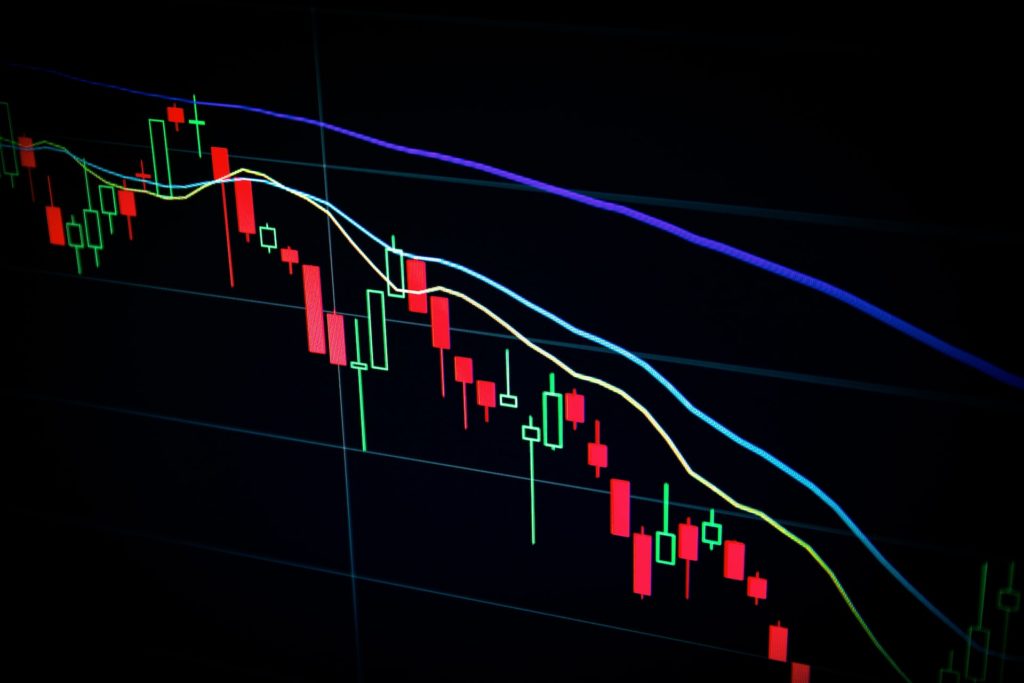During bear markets, investors frequently find themselves in the difficult position of witnessing a significant portion of the value of their holdings decline concurrently with a diminishing number of opportunities to make a profit. This can be a trying time for investors.
Bear markets are times of concern for some people because they have the potential to take back all of the returns that were captured in the months prior; however, for others, bear markets present a wealth of opportunities that few people have the risk appetite to take advantage of.

No matter what your perspective is, one thing is certain: engaging in irrational behavior and failing to adequately mitigate risks can both result in disastrous outcomes. As a result of this, it is a good idea to spend some time learning how to protect yourself in a bear market. This protection could be against external threats, unknown risks, or even your own poor decisions. Taking this precaution is a good idea.
This is how you can protect yourself when the market turns bearish.
1. Think About a Decentralized Insurance System
It is common knowledge that cryptocurrencies belong to the asset class known for its extreme volatility, which means that investing in them can either result in earth-shattering profits or losses.
Even though many traders are well prepared to deal with the volatility of cryptocurrencies thanks to their careful position sizing, clearly defined entry and exit strategies, and thorough understanding of risk-to-reward ratios, very few traders take into account the security risks that come with using both centralized and decentralized platforms. This is despite the fact that many traders are well equipped to deal with the volatility of cryptocurrencies.
Only in the past three months, a number of significant centralized cryptocurrency savings platforms have collapsed under the weight of user demand, while a variety of decentralized cryptocurrency financial institutions have been the target of cyberattacks. The typical outcome in this situation is? Numerous investors came very close to losing all of their money.

As the bear market continues, there is a possibility that several of the most well-known cryptocurrency investment platforms will fail in the coming months.
By using decentralized insurance platforms, it is now possible to almost completely mitigate the risk of losing funds due to an adverse event. This is despite the fact that it can be difficult to determine which platforms pose the greatest risk.
Through a variety of decentralized coverage products, these platforms give users the ability to protect themselves against a wide variety of threats, including hacking, theft, and the failure of smart contracts.
Users who pay for coverage will be protected according to the terms and conditions of their policy, which, depending on the circumstances, may save them from suffering losses that could be considered catastrophic.
In light of this fact, it is essential to bring to your attention the fact that the majority of decentralized insurance platforms make use of a discretionary payment system. This system determines whether or not to pay out claims based on the conditions stipulated in the coverage policy. In spite of this, there are typically both incentives and penalties set up to make sure that evaluators are being truthful in their work.
2. Get Rid of Assets that are Overvalued

If you’re anything like the majority of other people who invest, the odds are good that you have at least a few assets in your portfolio that have a slim to nonexistent chance of regaining the prominence they once held. In spite of this, you continue to hold on to them either because you don’t want to commit to your losses or because you aren’t ready to give up hope of the remote possibility that they will suddenly begin a meteoric run.
Regrettably, the majority of the time, assets that trade for a significant premium over their fundamental or practical value don’t stay that way for very long. This occurs frequently when stock prices trade significantly above their P/E ratio for an extended period of time before reverting to a number that is more reasonable. It also occurs when fundamentally weak cryptocurrencies lose their hype and the amount of selling pressure starts to increase.
You can begin to identify assets in your portfolio that are likely to struggle over your time horizon if you periodically track the fundamentals underlying your assets of choice, such as the development status, utility, funding, community size and sentiment, liquidity, and public perception. These fundamentals include: development status, utility, funding, community size and sentiment, liquidity, and public perception.

In light of this, it is always a good idea to define an exit strategy for each asset that you hold, and when the need arises, it is best to cut your losses as early as possible in the process. It’s possible that you’ll want to automate the execution of your exit strategy by placing limit sell orders just below key support points or simply engaging in market selling if there is sufficient liquidity.
It can be painful to sell assets at a loss, but continuing to hold on to assets that are losing value over the long term can result in losses that could be catastrophic. You need to keep a very keen eye out for the so-called “disposition effect,” which occurs when investors continue to hold on to assets even though they are aware that there is virtually no chance of recovery, and sell assets that have more potential upside early in order to lock in profits. You should be extremely aware of this phenomenon.
It is a valuable skill to be able to get out of losing positions early without becoming overly attached to them, and to do so without acting hastily. Also, resist the temptation to engage in retaliatory trading, as this strategy frequently results in additional financial hardships.
3. Take the Estimates of Value Very Seriously
During the course of a bull market, it is common for highly-hyped cryptocurrencies to achieve extraordinary market valuations, which frequently significantly exceed the value that they hold on their own.
As you might expect, this value typically crashes to the ground in the midst of a bear market, when the price of cryptocurrencies that are priced at levels that are significantly detached from their intrinsic value begins to fall.

Regrettably, only a small percentage of traders pay attention to the valuation of the assets they hold. They don’t view inflated valuations as a portent of bad things to come (like a market crash), but rather as an indication that the company is doing well and will continue to do well in the future.
The difference between the circulating market cap (calculated as token price * circulating supply) and the fully diluted valuation (calculated as token price * total supply) typically decreases over time as a big portion of the token supply is unlocked. This is because the circulating market cap is calculated using the circulating supply, while the fully diluted valuation uses the total supply.
Because of this, it is important to pay attention to fully diluted valuations in bear markets. This is because an excess supply, which can be caused by vesting unlocks, ecosystem grants, marketing tokens, and other similar things, can negatively impact its value. This is especially true if demand for the tokens dries up.
This can be easily tracked via the coin’s overview page, where we detail the circulating supply, total supply, market capitalization, and fully diluted market cap (fully diluted valuation) of most cryptocurrencies.
The circulating supply is the number of coins currently in circulation, while the total supply is the total number of coins ever created. When compared to the FDV, a significant disparity between market cap and FDV can be interpreted as a potential threat.
4. Consider Liquid Staking
On POS or DPOS-based digital assets, staking has become an extremely popular method for earning a yield that is frequently considered to be reasonable.
However, this return does come with a cost, as the majority of staking protocols require users to lock their assets for a predetermined amount of time before receiving their rewards. In some instances, this could be a matter of days, weeks, months, or even years (e.g. Ether).

During this period, potentially lucrative opportunities might present themselves, such as the price of the asset suddenly skyrocketing for no apparent reason. However, because of the mandatory holding period, you will not be able to sell your asset in order to profit from this development. In a similar vein, a negative event could take place that would affect the asset or the blockchain that it is based on, preventing you from closing out your position.
This was made abundantly clear when the value of LUNA dropped as a direct result of the demise of the UST stablecoin. Stakeholders of LUNA were compelled to watch the value of their tokens plummet from over $86 to less than $0.001 in the span of a single week after being locked into a 21-day staking period.
One possible approach to overcoming this obstacle is to engage in liquid staking. There are several platforms available to users today that enable them to stake their tokens without having to give up their liquidity. When users stake their native assets on one of these platforms, they are typically rewarded with an equivalent number of fully liquid derivative tokens.

The workings of these platforms can vary, but in general, users receive this reward. These derivative tokens can be sold, traded, or used in any way without restrictions, and they can also be used to redeem the underlying staked tokens after a predetermined amount of time has passed.
Other well-known names in the industry include Ankr, Socean, and StaFi in addition to the currently dominant market share held by Lido as the most popular provider of liquid staking.
However, it is important to keep in mind that liquid staked tokens almost always trade at a slight discount to native assets. Furthermore, this discount has a tendency to widen whenever the asset that it is pegged to experiences high levels of volatility.
5. Up Your Research Game
Simply enhancing your level of knowledge can be one of the most effective strategies for enhancing the performance of your investments and trading. In a practical sense, this means accessing the appropriate data sources and utilizing the appropriate tools in order to derive insights that can be put into action.

After all, an investor who is well-informed is often a successful investor; this is doubly true in a bear market, where the wrong moves can result in exaggerated consequences for the investor.
You are in luck because there is a wealth of information available that can assist you in not only remaining current with the market but also gaining access to insights that other individuals do not have. It is now possible to be well-read on the majority of projects, markets, and trends thanks to the availability of a wealth of research materials as well as the dozens of analytics platforms that are currently on the market.
6. Diversify your Crypto Portfolio
There is a possibility that investing in cryptocurrencies could result in either astounding profits or excruciating losses. The objective of any investment strategy should be to generate a profit while simultaneously minimizing losses.
Diversification is one of the most effective strategies for achieving this goal. It is safer to hedge your bets by dividing your funds among a variety of uncorrelated assets than it is to put all of your money into a single coin or token and hope that it will skyrocket in value than it is to put all of your eggs in one basket.

When it comes to price action, the vast majority of cryptocurrencies follow Bitcoin’s lead, which makes it difficult to implement this strategy when dealing with cryptocurrencies. Unfortunately, this is easier said than done when dealing with cryptocurrencies. Nonetheless, you may be able to lessen the impact of category risks by diversifying your investments across a wide range of market categories, such as decentralized finance (DeFi), L1 coins, L2 solutions, governance tokens, metaverse assets, and so on.
When you do this, you help to ensure that your portfolio is resilient enough to withstand sudden shocks to any one particular sector, while at the same time ensuring that you keep the potential upside that comes with picking winners in other sectors. You can assist your portfolio in absorbing losses more effectively with a diversified collection of assets, which also provides you with exposure to potential growth across a variety of uncorrelated market segments.

In recent years, a number of different platforms have emerged to help make this procedure easier to complete. A tokenized portfolio, which enables you to gain exposure to multiple assets through the use of a single token, is one of the most straightforward of these solutions.
Among these are the Crypto20 tokenized index fund and the DeFi Pulse Index, both of which track a variety of different DeFi tokens and allow investors to diversify their holdings among the top 20 cryptocurrencies based on their respective market capitalizations.
To reduce their exposure to risk, some people choose to employ a variety of investment strategies and modalities. For instance, utilizing derivatives to hedge risks on spot positions during times of extreme volatility or splitting investments over a range of platforms to mitigate the risk of black swan events such as hacks, downtime, or exploits are both examples of risk mitigation strategies.
The increasing complexity of the investment landscape correlates with an increase in the number of potential attack vectors. If the positions you hold are in any way vulnerable to the risks that have been described, it would be prudent to take protective measures.
7. Unfollow Influencers and Do Proper Research
Unfortunately, the cryptocurrency industry is full of people who consider themselves to be experts or savants in their field. Many of these individuals genuinely believe they can predict the future, and they make sure that their audiences believe the same thing.

But while some influencers are ethical and discuss their limitations and fallibility in great detail, others have developed a seemingly cult-like following that will buy virtually anything they promote with little to no additional research. While some influencers are ethical and discuss their limitations and fallibility in great detail, others are not.
The fact of the matter is that the majority of people who wield influence in the cryptocurrency space do not come from a financial background, and the vast majority of them do not have the experience that is required to differentiate truly promising projects from short-term hype jobs.
In addition to this, a great number of influencers are merely compensated to promote the next well-heeled memecoin or half-baked project, and they rarely make it clear that they are on the payroll of the project’s creators.
The popular catchphrase “not financial advice” (NFA) is used by many influencers when they speak highly of particular projects to an audience that is frequently naive and impressionable.
As a result, many of the audience members will buy in and hope for the best. These users, as you might expect, end up getting burned quite frequently, and the majority of them wind up losing money.
When someone tells you to buy something, especially if they do not have a long history of success in the industry, you should always approach the situation with a healthy dose of skepticism.
Bear in mind that in a rising market, everyone feels like an expert. When the level of hysteria is at its highest, it is typically difficult to make a bad investment decision regarding cryptocurrencies.
Because of this, it is essential to put in the effort to conduct your own research (also known as DYOR). This entails making use of primary information sources, data providers, and any other types of analysis systems that you consider to be capable of providing you with an advantage.
Disclaimer: The opinion expressed here is not investment advice – it is provided for informational purposes only. It does not necessarily reflect the opinion of EGG Finance. Every investment and all trading involves risk, so you should always perform your own research prior to making decisions. We do not recommend investing money you cannot afford to lose.
 English
English Français
Français Español
Español Bahasa Indonesia
Bahasa Indonesia 中文 (中国)
中文 (中国) Русский
Русский Português
Português Deutsch
Deutsch

